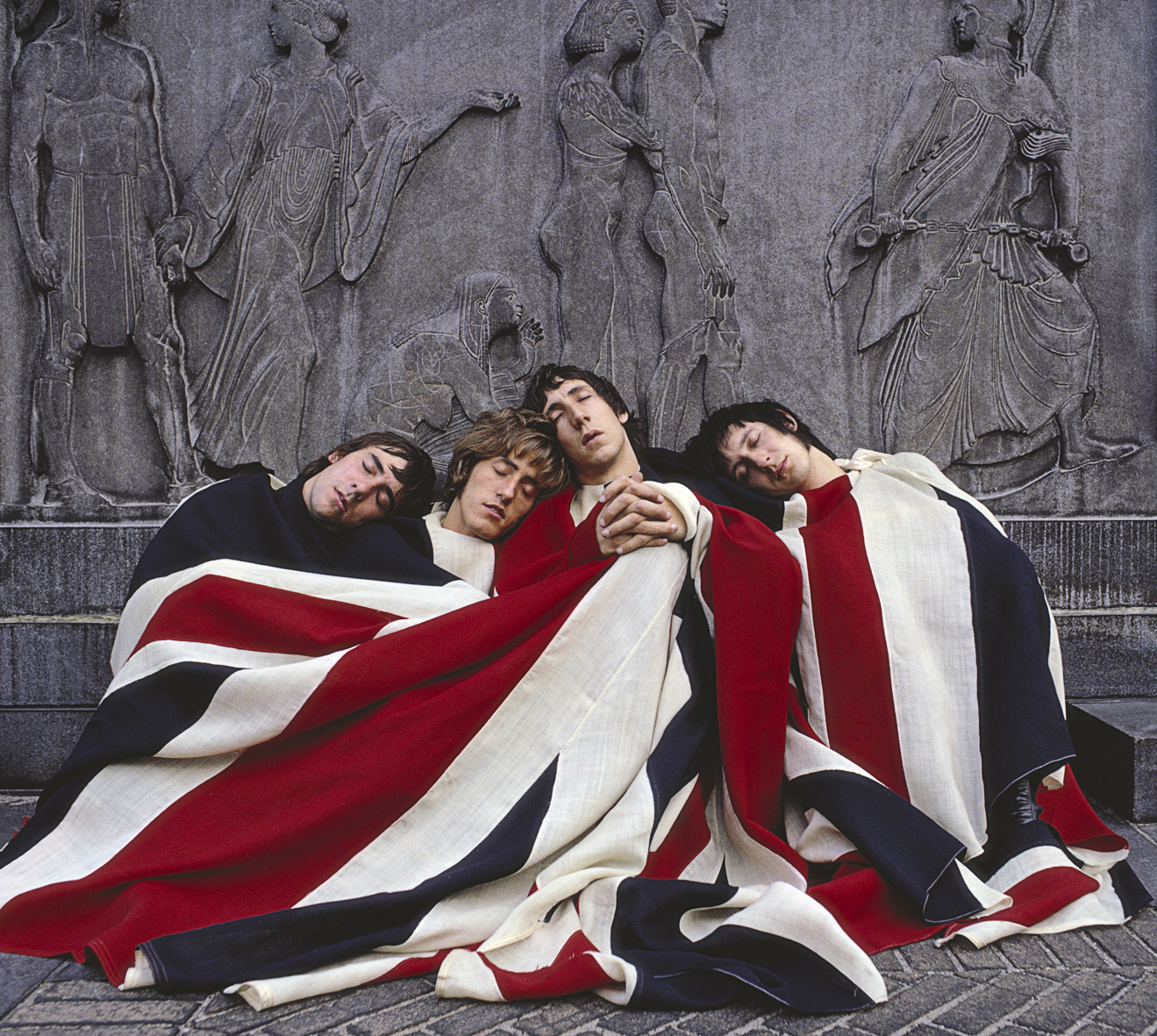
EDITOR’S NOTE: Sad, sad news. We received word on Sunday that Tom Sheehy, aka The Colonel — longtime Philly music publicist/scenester/historian, storied music biz vet, barroom philosopher, perennial guest list fixture, late-blooming recipient of a P.H.D. in 20th Century American History from Penn, colonel in the ‘MMaRmy, and frequent Phawker contributor — passed away this weekend. This week we will honor his memory by re-posting some of his greatest Phawker hits. Today we’re re-posting The Colonel’s 2011 remembrance of (almost) seeing The Who and The Pink Floyd at JFK Stadium in 1968. MORE
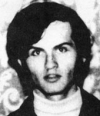 BY COLONEL TOM SHEEHY If you think that our home town is currently suffering from a case of municipal madness, trust me this is nothing compared to the fiscal insanity of Philadelphia in the 1960s. However, the problem then was that Philly had more revenue in the treasury than it knew what to do with! Sounds mad crazy doesn’t it? In 1968, our beloved city had so much bank, that it decided to become a rock concert promoter. That year, the city booked a series of concerts for that summer and called it “Schmidts Presents: The Philadelphia Music Festival.” The venue they used was the city-owned John F. Kennedy Memorial Stadium which was located where the Wells Core Wachovia First States Fargo Union Center now stands. This was the same venue where Live Aid was held in 1985, and after Grateful Dead played there in 1989, the city condemned the joint and tore it down. I’m pretty sure that was just a coincidence.
BY COLONEL TOM SHEEHY If you think that our home town is currently suffering from a case of municipal madness, trust me this is nothing compared to the fiscal insanity of Philadelphia in the 1960s. However, the problem then was that Philly had more revenue in the treasury than it knew what to do with! Sounds mad crazy doesn’t it? In 1968, our beloved city had so much bank, that it decided to become a rock concert promoter. That year, the city booked a series of concerts for that summer and called it “Schmidts Presents: The Philadelphia Music Festival.” The venue they used was the city-owned John F. Kennedy Memorial Stadium which was located where the Wells Core Wachovia First States Fargo Union Center now stands. This was the same venue where Live Aid was held in 1985, and after Grateful Dead played there in 1989, the city condemned the joint and tore it down. I’m pretty sure that was just a coincidence.
JFK stadium’s capacity was 104,000, but they only used about one fifth of the stadium, which gave them a space for 20,000. The series was held “in cooperation with the Philadelphia Department of Recreation.” so tickets were sold at local playgrounds, and at all Acme supermarket stores. The best part of the deal was the ticket price: $1.00! Even by 1960s standards, that was cheap; it cost $5.00 to see The Beatles two summers previously.
Now, even though the city completely sold out the concert series — and unlike most concert promoters didn’t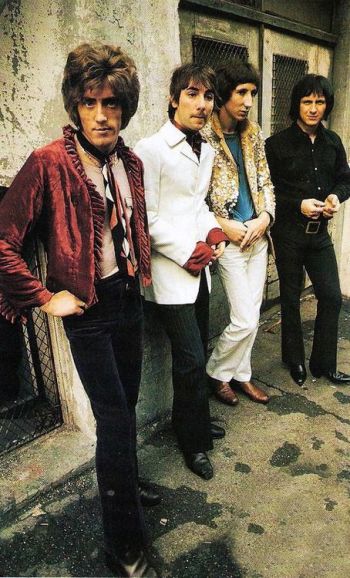 have to pay to rent the venue, because they owned it — they only grossed $20,000. Yet they still had to pay for talent, tickets, hire help at the playgrounds to sell the tickets, hire caterers, carpenters to build the stage, hire ushers and security the night of the events, and pay for all the print, radio and television adverting which ran from May to July. Even with a sponsor like the then-local brewery Schmidt’s kicking in some bucks, it was apparent that these shows were not designed to make a profit or even break even. So what was the what was the motivation? Allegedly, the whole idea was to give “the kids” something to do during the summer. You have to remember, this was the era of Vietnam and mass riots in many big cities, so city leaders were always mindful of the potential of “youth unrest.” Which made even less sense when you consider these concerts were promoted to persons under the drinking age and the sponsor was a beer company.
have to pay to rent the venue, because they owned it — they only grossed $20,000. Yet they still had to pay for talent, tickets, hire help at the playgrounds to sell the tickets, hire caterers, carpenters to build the stage, hire ushers and security the night of the events, and pay for all the print, radio and television adverting which ran from May to July. Even with a sponsor like the then-local brewery Schmidt’s kicking in some bucks, it was apparent that these shows were not designed to make a profit or even break even. So what was the what was the motivation? Allegedly, the whole idea was to give “the kids” something to do during the summer. You have to remember, this was the era of Vietnam and mass riots in many big cities, so city leaders were always mindful of the potential of “youth unrest.” Which made even less sense when you consider these concerts were promoted to persons under the drinking age and the sponsor was a beer company.
I bought tickets to two of the shows. One was for July 17th which featured The Rascals, The Box Tops, Country Joe and The Fish and Philly’s own The Delfonics. The other ticket was for July 24th, for a show billed as “The British Invasion” which had The Who, The Troggs and Procol Harum featured on the ticket. My friends and I were down the shore on July 17th, and we ended up blowing off driving back to Philly that night to see the show. It was OK by me, because the only band I really wanted to see was The Box Tops and, hey, we were only out a dollar. But more importantly, we heard on the radio that Procol Harum was off the bill for the following week because they couldn’t get work visas, and slotted in their place was one of my favorite new bands at the time, The Pink Floyd.
On the night of the 24th of July 1968, I was totally psyched, not only was I going to get to see The Pink Floyd, but I would get to see The Who once again. The year before, on August 24, 1967, The Who made their Philadelphia debut at Convention Hall, which was located at 34th and Spruce Streets. That night The Who were sandwiched on a bill between Blues Magoos from New York, and headliners Herman’s Hermits, Yeah, you read that right: The Who opening for Herman’s Hermits. During the intermission, my friends and I worked the room. We were trying to find anyone and everyone we knew to spread the word. Our message was simple: Walk out of Convention Hall as soon as The Who are done playing. We were pissed off that a band as great as The Who had to open up to such a joke act as Herman’s Hermits. They were up there with acts like The Monkees, Gary Lewis & The Playboys and Freddie and the Dreamers. Those were all “bands” your little sister liked; not groups that anyone who seriously dug music ever gave a fug about.
As soon as the lights started to come down, me and my friends rushed the stage as The Who launched into the opening chords of “Substitute.” I spent the first minute or so just checking out what the members of the band looked like and what they were wearing. Peter Townshend wore a gold lamé jacket with a white shirt which had large ruffles from the neck down to the waist; ruffles also appeared through the sleeves of the coat covering part of his hands. Rodger Daltrey, the god of all Mods was wearing a quilt patterned multi-color jacket/cape with fringe around the edges; he also wore a pair of pink trousers. Keith Moon was wearing just a white t-shirt, but the first thing that struck me about Moon was how young he looked; he seemed no more than 17, even though he turned 21 the day before. Nothing struck me about the statuesque man-in-black bassist John Entwistle, except the speed in which his fingers moved around the fret board.
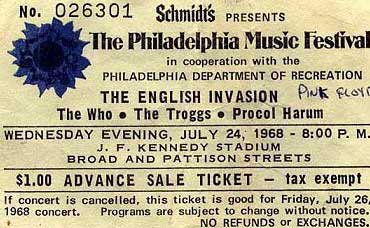 From “I Can’t Explain,” to “Pictures of Lilly,” to “Happy Jack,” and their cover of the Beach Boys’ version of “Barbara Ann,” (sung by Keith Moon), The Who proved themselves to be one of the fiercest and most explosive groups in the summertime in the year of our lord, AKA The Summer of Love. The Who were clearly the most powerful opening act I had ever seen up until that point in my young concert going life. They played at volume levels I never before experienced from a quartet with just one guitar, bass, drums and a front man. This massive sound could have been attributed to the fact that each guitarist used two gargantuan Fender amps a piece. Front man Roger Daltrey twirled his microphone cord into the air, then throw the microphone itself over the heads of the audience, then make the cord and mic return to his hand like a lasso! While at the same time, Keith Moon, sitting behind a custom set of Premier drums, with two kicks, and the name of the group decaled on each head, displayed smiles, frowns and all sorts of wonderful facial tics like a carnival clown. Peter Townshend didn’t smile or make much eye contact with the audience, he looked like one pissed off bloke. His on-stage presence and demeanor suggested that a certain annoyance was building up inside of him and that at any second there would be blood. He was a Mod for sure, but he was also something else. Something as yet unnamed, but a decade later Townshend would have been dubbed a punk. Townshend invented the guitar playing windmill. That was when he would strike a chord on his guitar, and continue to flail his arm in a rapid circle, continually hitting the strings, and because of the intense motion, his fingers would hit his guitar strings along with his pick, and if you were standing right in front of him, you would feel this slight wet sensation spraying across your face; it was Peter Townshend’s blood. Look at the cover of The Who Sell Out, and you can see the scars on Townshend’s index finger. For Townshend, rock & roll was not only an art form, it was also a blood sport.
From “I Can’t Explain,” to “Pictures of Lilly,” to “Happy Jack,” and their cover of the Beach Boys’ version of “Barbara Ann,” (sung by Keith Moon), The Who proved themselves to be one of the fiercest and most explosive groups in the summertime in the year of our lord, AKA The Summer of Love. The Who were clearly the most powerful opening act I had ever seen up until that point in my young concert going life. They played at volume levels I never before experienced from a quartet with just one guitar, bass, drums and a front man. This massive sound could have been attributed to the fact that each guitarist used two gargantuan Fender amps a piece. Front man Roger Daltrey twirled his microphone cord into the air, then throw the microphone itself over the heads of the audience, then make the cord and mic return to his hand like a lasso! While at the same time, Keith Moon, sitting behind a custom set of Premier drums, with two kicks, and the name of the group decaled on each head, displayed smiles, frowns and all sorts of wonderful facial tics like a carnival clown. Peter Townshend didn’t smile or make much eye contact with the audience, he looked like one pissed off bloke. His on-stage presence and demeanor suggested that a certain annoyance was building up inside of him and that at any second there would be blood. He was a Mod for sure, but he was also something else. Something as yet unnamed, but a decade later Townshend would have been dubbed a punk. Townshend invented the guitar playing windmill. That was when he would strike a chord on his guitar, and continue to flail his arm in a rapid circle, continually hitting the strings, and because of the intense motion, his fingers would hit his guitar strings along with his pick, and if you were standing right in front of him, you would feel this slight wet sensation spraying across your face; it was Peter Townshend’s blood. Look at the cover of The Who Sell Out, and you can see the scars on Townshend’s index finger. For Townshend, rock & roll was not only an art form, it was also a blood sport.
Now Townshend used just one guitar throughout the set that night; it was a double necked Gibson. However, all of a sudden, before he began the next song, which would be The Who’s finale that evening, Pete took the Gibson off and a roadie handed him an old looking Fender. My hearty was pounding, because I knew what was about to happen. A friend of mine from New York saw The Who earlier that year when they made their American debut at the RKO Theater, and he filled me in on all the show’s closer. With his Fender in check, Townshend hit it with “My Generation.”
The opening chords fevered up my imagination. Townshend was now in furious mode; he was twirling & whirling his musical life away as his singer 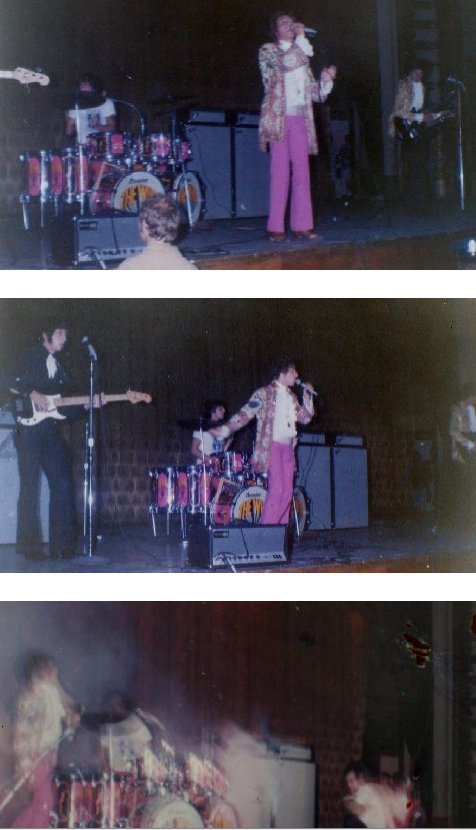 spewed his lyrics at the audience. And this was an audience that was receiving messages from California all summer long to wear flowers in their hair and to make love not war. The Who would have none of it, as Roger Daltrey indicated:
spewed his lyrics at the audience. And this was an audience that was receiving messages from California all summer long to wear flowers in their hair and to make love not war. The Who would have none of it, as Roger Daltrey indicated:
People try to put us d-down
Just because we get around
Things they do look awful c-c-cold
I hope I die before I get old
“I hope I die before I get old” was not a dispatch that could have come from the city by the bay or a missive from some Grateful Airplane type hippie group selling peace, but a cannonball that could only have an explosive aftereffect. And it sure did.
Townshend lifted the Fender above his head. He grabbed it by the neck, and abruptly began to smash his guitar on the floor of the stage. A few seconds later, Keith Moon started to kick his drum kit about. He received aid from Roger Daltrey, as the front man picked up his microphone stand, and started to topple any and all percussive instruments within sight. Townshend moved toward his amps, and belted them with his guitar. All this activity created a monstrous sound, which was only enhanced visually by the sight and smell of smoke coming from the debris ridden stage. I have never been in battle, but on that particular night, I knew what war must sound like. As me and my friends exited Convention Hall, I began to wonder what it would be like when that band became a headlining act.
Exactly eleven months later, I headed down to South Philly to find out. As I was leaving the house that night, my father said I should bring an umbrella, because a major storm was predicted for later that evening. Like most things dad said to me regarding rock and roll shows, it just went in one ear and out the other. Plus, nobody who was cool ever carried an umbrella back in the day. When I got to JFK, Mandala, a Canadian version of Blood, Sweat, and Tears, who were somewhat popular in the land of the maple leaf, but relatively unknown here in America were playing on stage. They didn’t even receive any advance billing on tickets or in any of the advertising for the concert. They did nothing for me.
Up next: Pink Floyd. They opened their set with “Set The Controls For The Heart Of The Sun” and it sounded 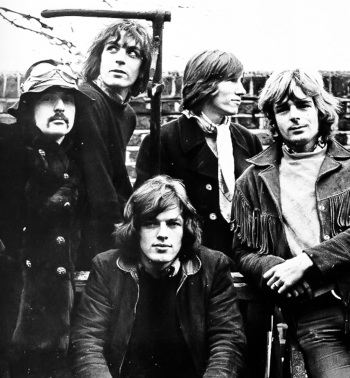 just like the record, which was a huge compliment back in the day. Yet their live sound was more expansive, dreamy and very atmospheric. The second song of the set was “A Saucerful of Secrets.” As Pink Floyd were playing, the sky grew dark and the temperature dropped very quickly, and then the rain came. Floyd kept playing, sparks began to be visible near David Gilmore’s amp, and then unexpectedly, a roadie type came running across the stage, cupped his hands over Roger Waters’ ear, and told him something. Waters did not look happy. He thereupon told the audience: “They want us to leave the stage, but we’ll play through eight feet of bloody water if we have to!” At that moment, the heavens opened up, and sheets of rain overspread the stage.
just like the record, which was a huge compliment back in the day. Yet their live sound was more expansive, dreamy and very atmospheric. The second song of the set was “A Saucerful of Secrets.” As Pink Floyd were playing, the sky grew dark and the temperature dropped very quickly, and then the rain came. Floyd kept playing, sparks began to be visible near David Gilmore’s amp, and then unexpectedly, a roadie type came running across the stage, cupped his hands over Roger Waters’ ear, and told him something. Waters did not look happy. He thereupon told the audience: “They want us to leave the stage, but we’ll play through eight feet of bloody water if we have to!” At that moment, the heavens opened up, and sheets of rain overspread the stage.
The members of Pink Floyd played on, however, a few minutes later, the sound died; somebody pulled the plug; the show was stopped and the members of Pink Floyd left the stage. Then someone came to the center microphone and announced that the show would not continue. We were left with no Troggs and no headlining performance from The Who. Everyone went home drenched to the bone. The next day I heard from a friend that there was an announcement on the news that there would be no rain date. The City of Philadelphia was the promoter. As a consequence, my hometown let me down. If only they had spent a little more of their then vast treasury on a cover for the stage, I would have got to see the bloody Who as the headliner!
In the aftermath of that disaster, Philly got out of the rock promoter biz. The next year, New York Jazz promoter George Stein was hired to put on the “Summer Pop Festival” which he booked inside the Spectrum. One of the opening acts for that engagement was another up and coming British band called Led Zeppelin. The Who finally headlined Philly in 1969 at Electric Factory, and in 1982, they were on top of the bill at JFK for the full 104,00 capacity. As for myself, I left the open air concert experience behind. Wherefore, my musical mantra ever since that rainy night in South Philly has been: “No Roof … No Rock !!!”
